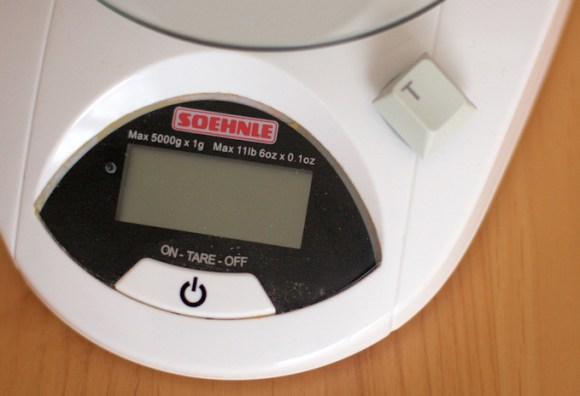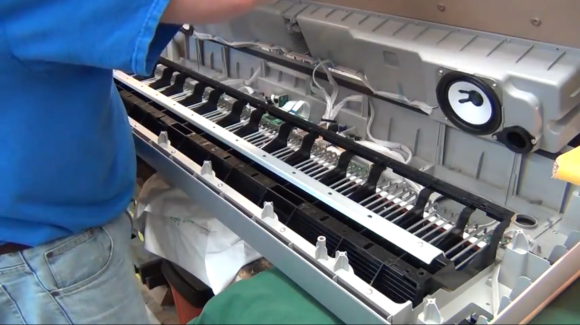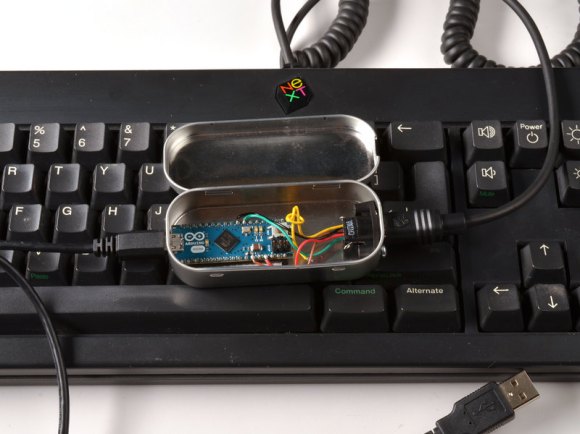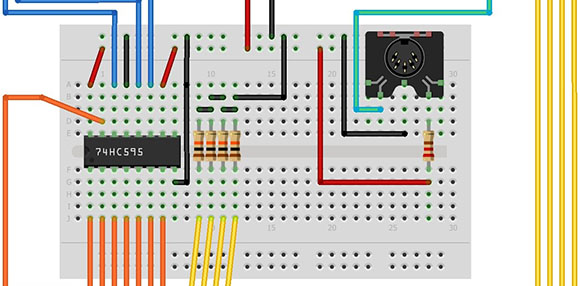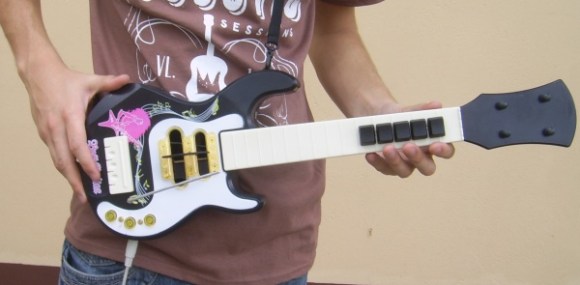
[Heinrich Laue] was kind of a latecomer to the fake guitar playing video game phenomenon. He played Frets on Fire — an open source clone of the game — on PC and eventually bought a copy of Guitar Hero World Tour. But playing on the keyboard was a drag. Instead of buying a controller he built his own hacked Guitar Hero controller from a scrapped keyboard and a toy guitar.
The plastic toy he started with was screwed together. This is a really nice since it’s almost impossible to open toys that have been welded together. There was plenty of room inside for all his components and even some space to run the wires.
He started the electronic portion of the build by tracing out the keyboard matrix to figure out which solder pads he could tap into. The strum bar uses a door hinge with buttons on either side of it. When you move it back and forth it hits the buttons, with the spring mechanism in each returning it back to center. The fret buttons are keys from the keyboard, but the switches uses were pulled from a few computer mice. But the real innovation comes into play when he added the Star Power tilt sensor and whammy bar. Follow the link above to find out how he did it.



